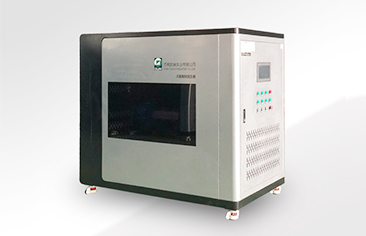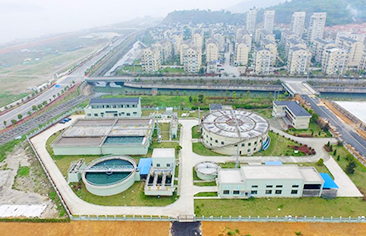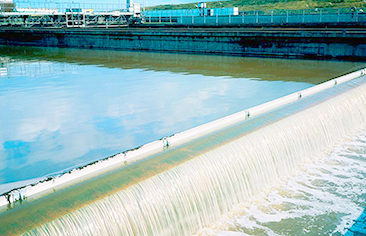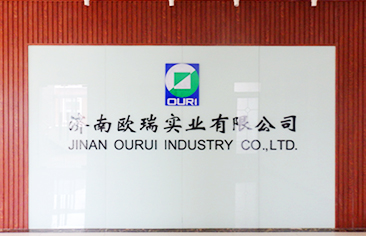Now that environmental problems are getting more and more serious, and water pollution is getting more and more serious. Water is indispensable for maintaining the normal operation of human body functions. Without water, people's health will be greatly threatened. But now our water pollution is serious, so water purification equipment has become the first choice for water purification. However, many friends may not know the water purification technology of household water purifier equipment at all, so the editor will introduce three common technologies for household water purifier water purification.
1. Microfiltration (MF) water purification technology
The application of microfiltration technology is the most popular, but the precision is not high. It is generally used as the pretreatment of water purifiers. The filtration precision of microfiltration is generally 0.1-30 microns. Like all kinds of common PP filter elements, activated carbon filter elements, ceramic filter elements, etc., all belong to the category of microfiltration. They are used for simple coarse filtration and can remove large particles of impurities such as sand, rust, etc. in the water. , But cannot remove harmful substances such as bacteria, viruses, organic matter, and heavy metal ions in the water. The microfiltration membrane of the water purifier is usually installed in front of the ultrafiltration membrane and the reverse osmosis membrane. As the preprocessor of the ultrafiltration water purifier and the RO water purifier, it can effectively protect the ultrafiltration membrane and the reverse osmosis membrane and extend the entire Machine life.
2. Ultrafiltration (UF) water purification technology
Ultrafiltration technology is widely used, with large water output and high filtration accuracy, but there are still certain limitations in some aspects. Ultrafiltration has a filtration accuracy of 0.01 to 0.1 microns, which is one of the six high and new technologies in the 21st century. It is a membrane separation technology that uses differential pressure to filter out harmful substances such as rust, sand, suspended solids, colloids, bacteria, viruses, and macromolecular organics in water, and can retain some mineral elements that are beneficial to the human body. It is the core component in the production process of mineral water and mountain spring water. The recovery rate of water in the ultrafiltration process is as high as 95%. In addition, flushing and back flushing can be easily realized, not easy to be blocked, and the service life is relatively long. Among them, ultrafiltration membranes with a filtration accuracy of 0.01 micron are widely used because of their good water production and filtration efficiency. Huamai ultrafiltration water purifier can be directly connected in series to the domestic water supply pipeline, and the clean water quality has brought protection to water appliances. Because it produces less waste water and large water output, it can fully meet people's large water requirements for soup, cooking, vegetable washing, bathing, and laundry. Because the ultrafiltration technology is easy to operate, low cost, does not need to add any chemical reagents, and the water production is large, it can make full use of water resources, and conforms to the theme of world environmental protection, therefore, the ultrafiltration water purifier will still be in a long period of time. It occupies the mainstream of the market.
3. Reverse osmosis (RO) water purification technology
The reverse osmosis technology has high filtration accuracy and high effluent quality, but the waste water ratio is too high and it is not environmentally friendly. The filtration accuracy of reverse osmosis can reach about 0.0001 micron. It is an ultra-high-precision membrane separation technology using differential pressure developed by the United States in the early 1960s at a cost of billions of dollars. Reverse osmosis is currently the world’s core technology for producing pure water. Its core element is reverse osmosis membrane with a pore size of 0.0001 micron. Under certain pressure, only water molecules can pass through the reverse osmosis membrane. Salt, heavy metal ions, organic matter, colloids, bacteria, viruses and other impurities cannot pass through the reverse osmosis membrane because their diameter is larger than 0.02 microns, so the water filtered by the reverse osmosis membrane is more pure. With the improvement of living standards, people are more and more concerned about the safety of drinking water. Reverse osmosis water purifiers are gradually becoming the mainstream of direct drinking water purifiers, which fully meets people’s demand for "pure water". It can not only completely remove water The six major harmful substances can also effectively remove scale, and the filtered water is truly "pure water". The water purifier can meet the direct drinking water needs of homes and offices, and is often used for making tea, boiling soup, brewing milk, making coffee and drinking directly. However, the water utilization rate of the reverse osmosis pure water machine is low, and the waste of water is a major problem.
At present, these three technologies are mainly used in the domestic domestic water purifier market. Many water purifier manufacturers are constantly exploring and developing, striving to integrate several major water purification technologies to comprehensively use them, hoping that there will be more and better water purification treatments. Technology brings us the purest water.
The above information is compiled and edited by the Ou Rui brand sodium hypochlorite generator!













